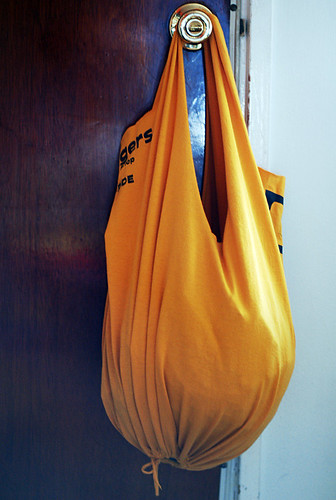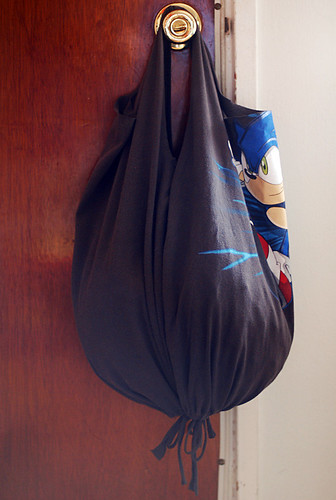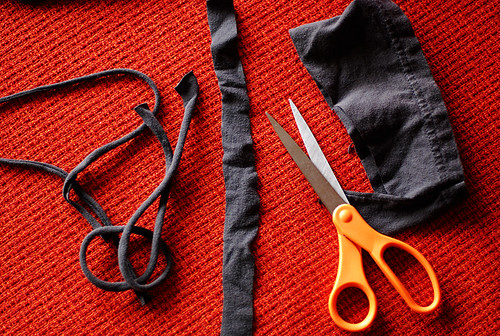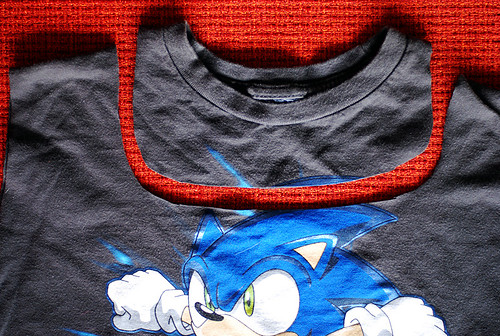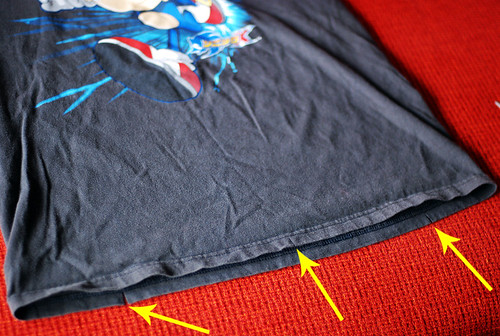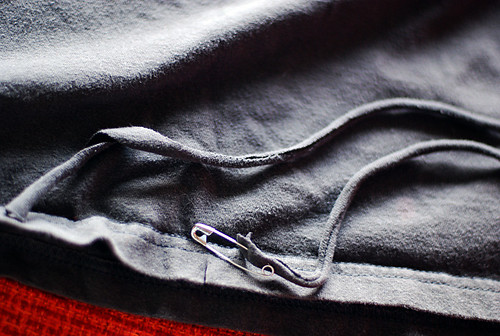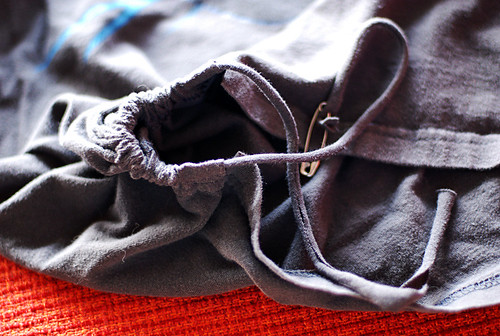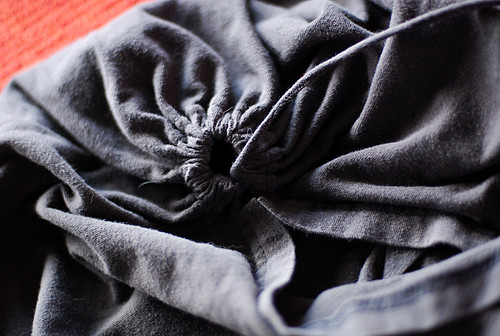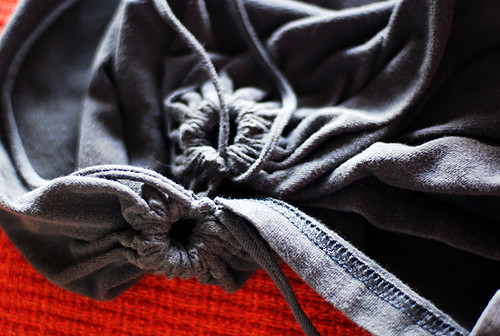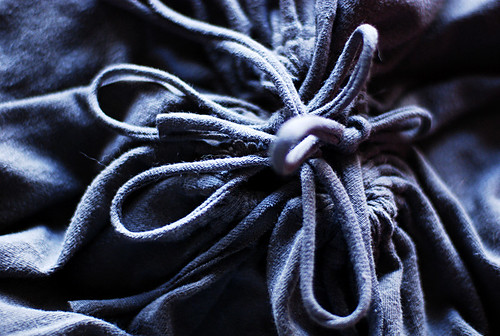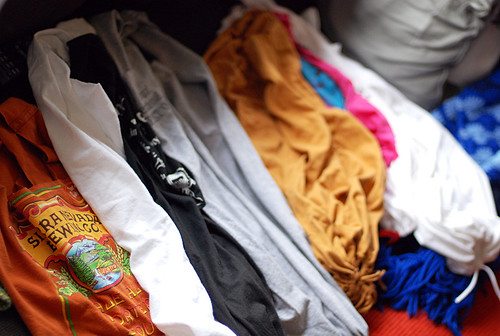Tutorial time! I got a gig teaching a recycled t-shirt project at
the library a few months ago, with a request for a recycled tee bag – the only bags I’d
made from tees in the past had required sturdy
sewing,
and I didn’t want hand-sewing to be the only thing holding the bottom
closed in a class version of the bags, so I started brainstorming about
some kind of hand-sewing-friendly or no-sew bag idea…. and here’s what I
came up with!
The simplest version of these bags is great for smaller tees, or the
more light-weight kind of girl-tees – just turn the bottom of the shirt
into a drawstring and tie it closed! As you can see, even with a not
huge tee, this will still leave a significant hole in the bottom of your
bag, but for purposes like grocery shopping, this size hole shouldn’t
really matter…
But to make smaller holes, just make more than one of them! Here’s a bag bottom with 2 holes:
And now for the actual tutorial – for this one, with the
step-by-step, I will be making the bottom with 3 holes. So, start with a
t-shirt that you don’t wear anymore, or a fun one you found at a thrift
store. Besides a tee, you’ll also need scissors and a safety pin.
That’s it!
Cut the sleeves off, but try to make a somewhat straight line, and go
in a bit from the seam – these lines will be the sides of your straps:
Cut some strips from those sleeve pieces – about half an inch wide,
the length of one time around a sleeve is good, and as many strips as
the number of holes you’ll be making in your bag bottom. (I’ve made bags
with 1, 2, and 3 holes, but I haven’t tried more than that.) Pull the
ends of the strips to stretch them out and make them curl in:
Cut the neck out to become your bag’s opening – the way you cut this
can depend on your tee’s picture (if there is a picture), and also the
shape you want your bag. Just make sure you cut a big enough opening to
fit things through, for a functional bag:
You could make it rounded, V-shaped, or squared like this one:
Now the top/straps part is done, time for the bottom. Snip slits in
the hem part of the tee bottom – as many slits as you want holes. 3
slits, below, is for 3 holes, for a single hole, like the yellow one at
the top, just cut one slit, and for 2 holes, snip 2 slits. The slits
should be equally spaced from each other, but the spacing doesn’t need
to be exact – I just eyeballed my slit placement, no measuring:
Now stick a safety pin through the end of one of those strips you
made, and start running it through the hem, through one of the slits:
Run it through to the next slit (or all the way around and back to
the beginning, if you’re making a single hole) and pull the cord so it’s
centered-ish:
Tie the hole closed as tightly as you can, and tie a tight knot:
Now repeat those steps for the remaining sections, one slit to the next, tie tightly. This is after the second hole is closed:
For an ultra sturdy bag bottom, tie one cord strand from one hole
together with one strand from the hole next to it, tightly, and repeat
for each strand (as many of these knots as the number of holes you have;
ignore this step if you’re making a single hole), so that the holes are
all tied to each other.
Now, you can choose whether you want the t-shirt cord ties hanging
down at the bottom, or hidden on the inside. To hide them inside, bring
them through the center, then tie bows on the inside so they don’t fall
back through. Or, tie bows on the outside if you prefer (or you could
just cut the cords short and skip the bows):
My finished Sonic bag!
The 1-hole version of this project takes more like 5 minutes, but the
more holes you have, the longer it takes (by a few minutes) – it’s my
favorite kind of project: 100% recycled materials (in this case, just
the tee and nothing else!), minimal tools, quick+easy, and a super
useful finished product!
I made these for everyone in my family as extra bonus xmas gifts – my
mom just told me she’s been using hers all the time and they are
stronger than she would have expected. I even used my family’s bags to
wrap their gifts in, to save on paper wrapping waste and because it
looked fun!
You can
always save it away in your memory (or bookmarks) for your next
gift-giving occasion. I hope you love this project as much as I do!
Now go and make lots of them so you’ll never be without a reusable
shopping bag again!
Besides grocery bags, purse bags, beach bags and gifts-what other uses can you think of for these cute "no sew" bags?

















